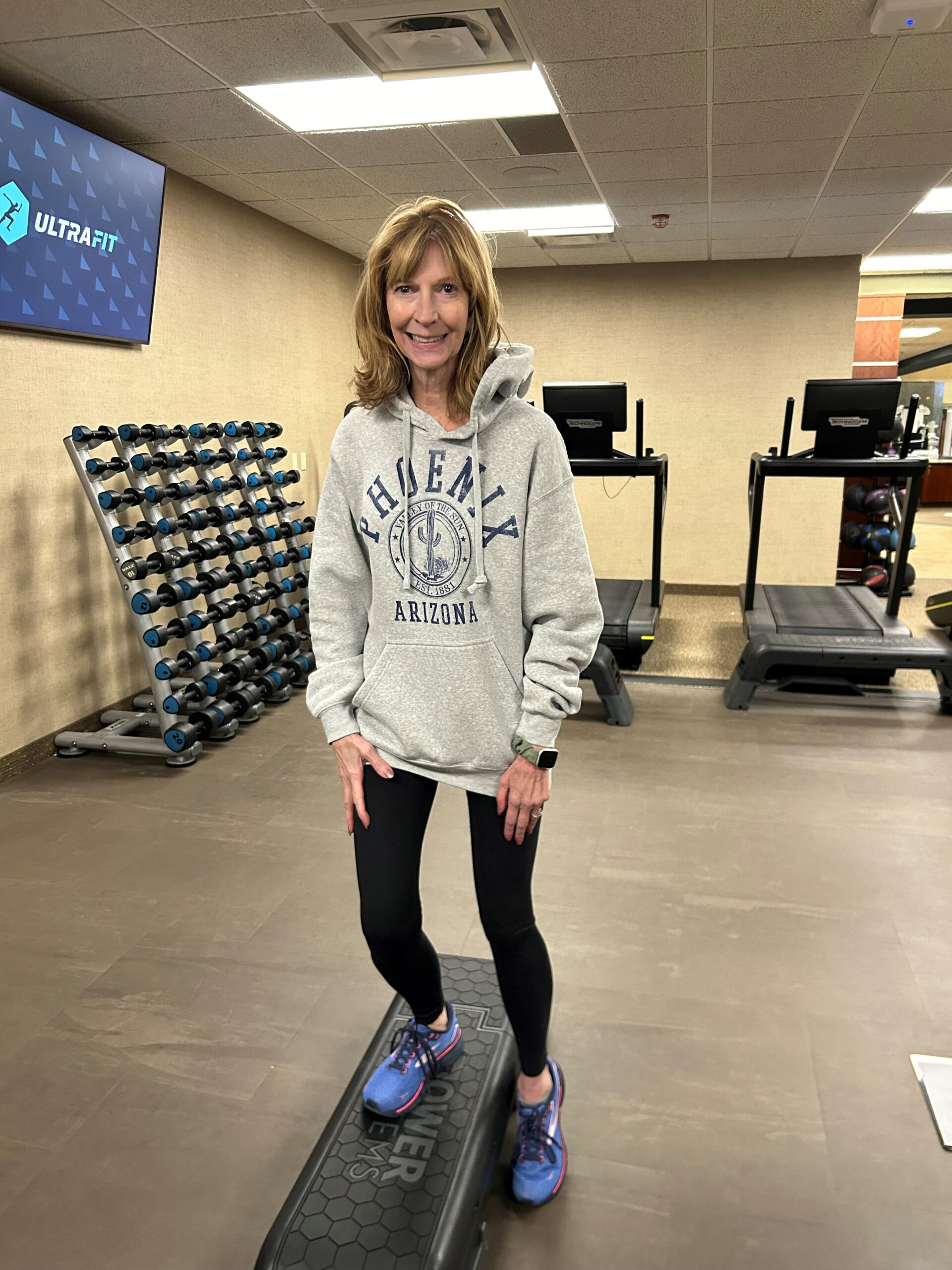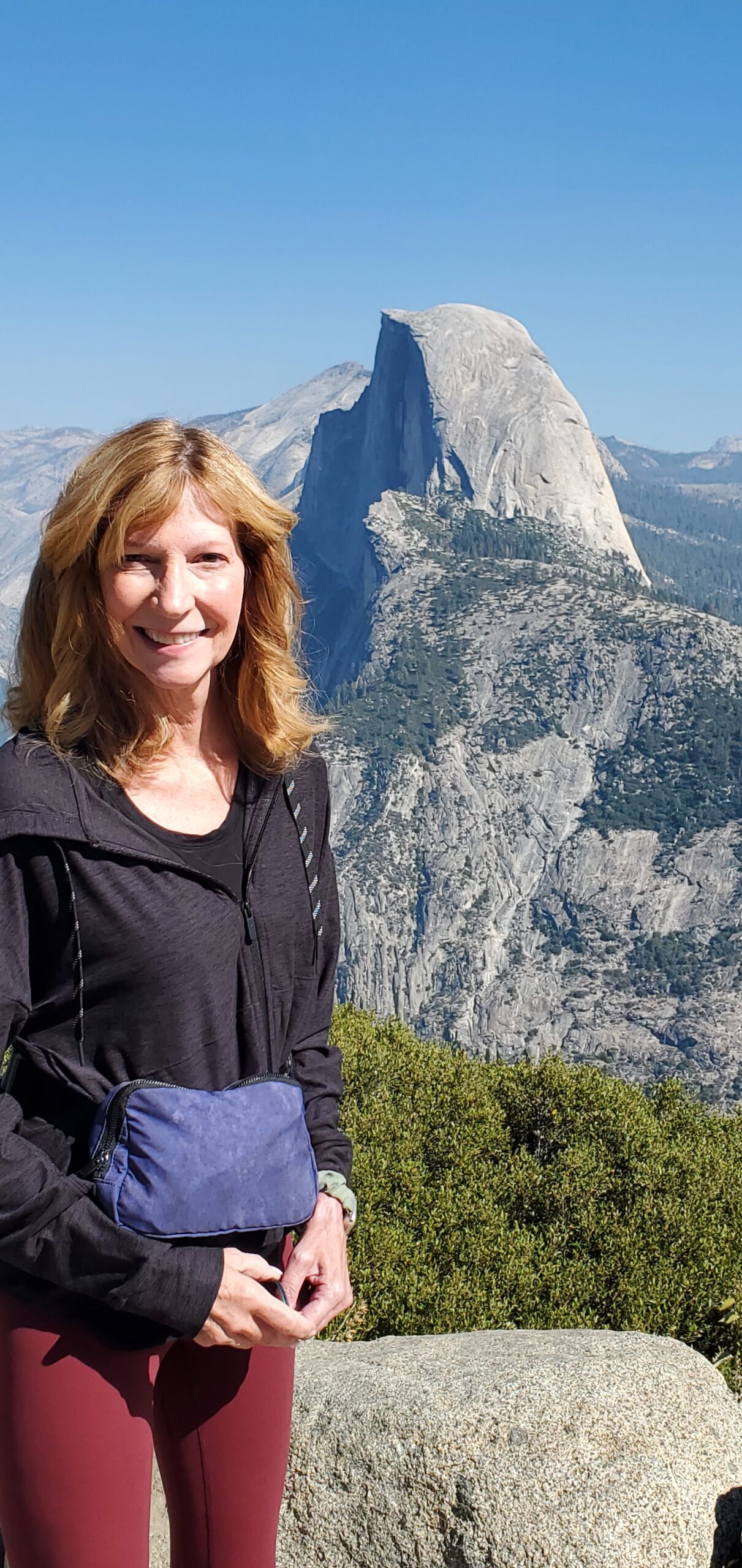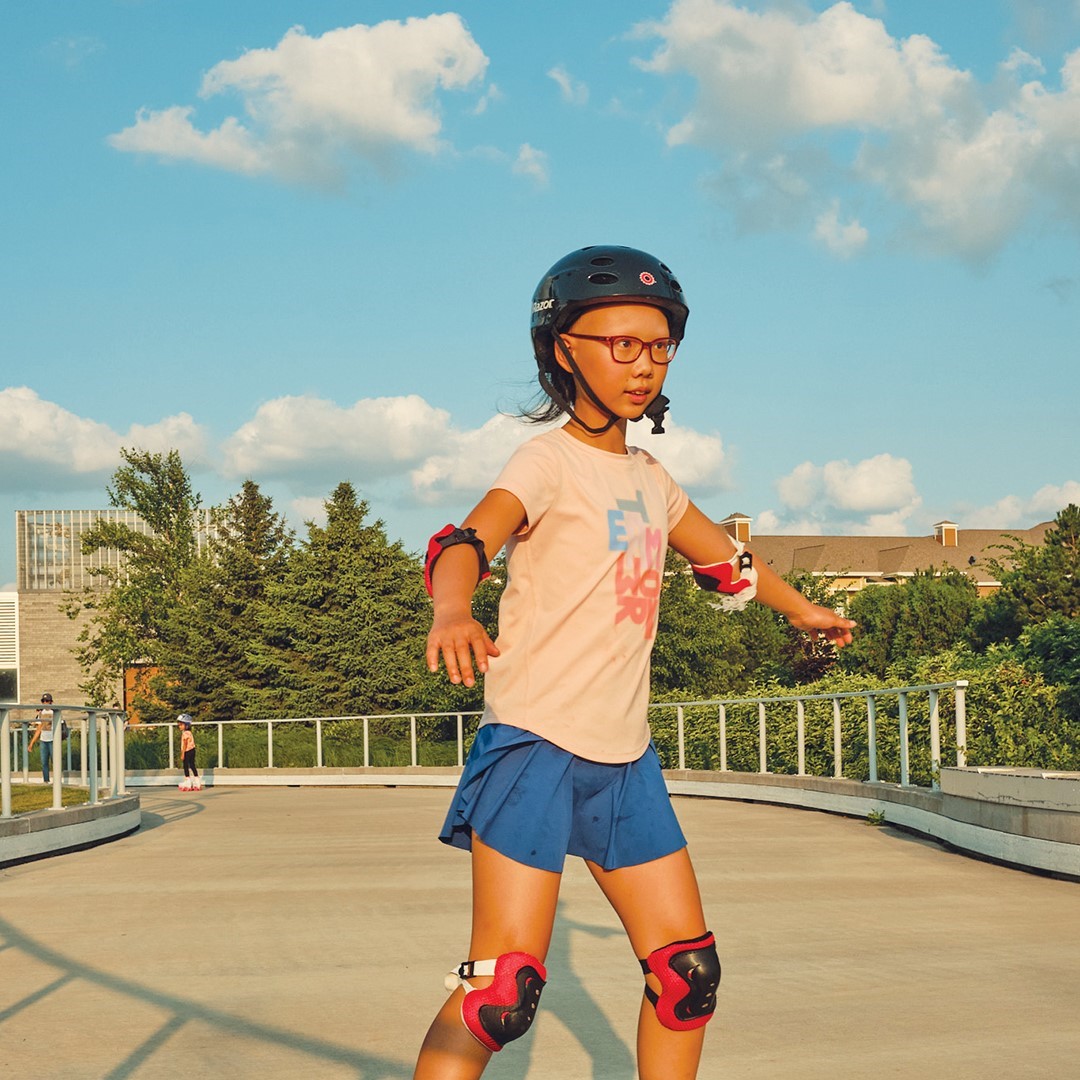
Sue Kapsner. Photo: Life Time
During May’s American Stroke Month, we connect with Sue Kapsner to hear her story.
On September 3, 2022, Sue Kapsner woke up feeling “a little off.” “I didn’t feel great, [it was] like a stomach ache, but not bad enough for [me] to really stay in bed,” she says. The 62-year-old Maple Grove resident still went about her day, including what she considered a short walk.
“Just for background, I was very physically fit,” Kapsner says. “I could do a five-mile walk in an hour without really working on it at that point.” After returning home from her walk, she spoke with her partner, Tom, and they arranged for him to go to her house. “I knew he was coming. He lives in Lionel Lakes. And so I said, ‘I’m going to take a shower,’” she says.
Kapsner got into the shower and began to wash her hair, “And when I looked up to rinse it, I saw stars, the stars you see on the cartoons when they get hit in the head with a frying pan or something,” she says. “It was like, ‘OK, I’ve never had that before.’ So I saw stars and I just knew I was going to fall and couldn’t stop myself.”
She fell, hitting first her left shoulder and then her right on the way down. “Once I fell, I didn’t realize something really bad had happened,” Kapsner says. “I was trying to get myself up. I was trying to push over with my right hand and push myself up, and then I just couldn’t.”
Kapsner knew Tom was already on his way, so she began pounding and kicking on the wall with her right hand and right foot. “Then he got to the house and heard me pounding and came in. He looked at me. He said, ‘I’m calling 911. You had a stroke.’ And I said, ‘I didn’t have a stroke.’ And he said, ‘Well, you can tell the EMTs that.’”
Within two minutes, Kapsner says the EMTs arrived and administered clot-busting medication to her in the ambulance parked in her driveway. She says that the EMTs confirmed Kapsner had had a stroke, and recommended transporting her to the trauma center at North Memorial Health – Robbinsdale Hospital. “I think Tom saved my life in a lot of ways,” Kapsner says. “I guess the lesson is to have the person who was not having the stroke make the decision.”
Road to Recovery
Kapsner spent a month in the hospital recovering, but her days were far from idle. “I had occupational therapy, physical therapy and speech therapy twice a day while I was in the hospital,” she says, crediting her recovery to the intense level of care she received.
After the stroke, much of what Kapsner took for granted before had to be relearned.
She started with speech therapy, which included relearning how to swallow. Next, she started occupational therapy. “It was a lot of that problem-solving, stuff that they did with me to make sure I was thinking right,” she says. Kapsner counts herself lucky that her mental acuity wasn’t gravely impacted. “And then the physical therapy also was twice a day. And that was good because they needed to teach me how to walk again,” she says.
Her pace didn’t slow once she was discharged. Kapsner says she attended physical and speech therapy twice a week and occupational therapy three times a week at the Arbor Lakes Medical Building.
“Eventually, my physical therapist said, ‘You’re doing so great. We’re going to give you a little break,’” Kapsner says. “Well, I didn’t really want the break because I wanted to keep improving.” Her team did give her clearance to pursue personal training twice a week, which is when she returned to Life Time Maple Grove.
Kapsner connected with personal trainer Tina Kuharski for one-on-one sessions. “She’s amazing,” Kapsner says. “She knows some about it because she’s had a few family members who have had strokes. I feel like [she’s] really mirroring a lot of the things they were doing in the physical therapy.”
“[Sue] would take my group fitness classes, so I trained her before this happened, too,” Kuharski says. “It helped that she had a good base before she came. She was very active before.”
- Since her stroke in 2021, Sue Kapsner’s relentless efforts have led to hard-won improvements. She’s since begun to resume her active lifestyle.
- Kapsner has taken trips to California’s Big Sur and Yosemite National Park in October 2023 followed by Cabo San Lucas, Mexico in February 2023. Photos: Tom Sobetski
When Kapsner first came in, the pair’s initial focus was on regaining balance and correcting her gait. “My left leg is not as strong as my right, and so it caves in or turns in,” Kapsner says. “[Tina] works a lot on me trying to get my body symmetrical.”
Stretching was also a key part of their sessions. “We have to worry about reverse muscle atrophy, which is wasting or thinning of muscle tissue, which happens normally, but it happens a little more aggressively in stroke victims,” Kuharski says. “We did a lot of stretching because she has contractures, which are [a] fixed tightening of the muscle or tendons.”
Kapsner still faces particular difficulties with her left hand, which has a limited range of motion. “I have to look at my hand still and think, ‘OK, you have to open your fingers and then you have to close them.’ It sounds so crazy, but it’s true,” Kapsner says. But Kuharski says she’s been seeing improvements, “She’s able to extend that arm out and her fingers aren’t so contracted. She’s able to straighten her fingers out.” Kuharski attributes these improvements to Kapsner’s determination to get better.
“I want to get better and I’m seeing improvements from what I’m doing. That’s what motivates me,” Kapsner says. “And then my kids … I want to show them that resilience and that hard stuff happens in your life, and you still keep going and do the best you can. Even when it’s really hard and frustrating Then I look back at where I was, [when] they were teaching me to swallow. And now if I walk an 18-minute mile instead of a 12-minute mile, who cares?”
Consult your primary care physician or other qualified healthcare provider with any questions regarding a medical condition or treatment.
Think F.A.S.T.
During American Stroke Month, the American Stroke Association puts an emphasis on spotting the following stroke warning signs and acting F.A.S.T., which its website breaks down as follows:
Face Drooping: Does one side of the face droop, or is it numb? Ask the person to smile. Is the person’s smile uneven?
Arm Weakness: Is one arm weak or numb? Ask the person to raise both arms. Does one arm drift downward?
Speech: Is speech slurred? Is the person unable to speak or hard to understand? Ask the person to repeat a simple sentence, like ‘The sky is blue.’
Time to Call 911: If you have any of these symptoms or see someone else having them, call 911 immediately!
Find more information and resources at stroke.org.
12601 82nd Ave. N.; 763.420.8282
Facebook: LifeTime.Life
Instagram: @lifetime.life
























